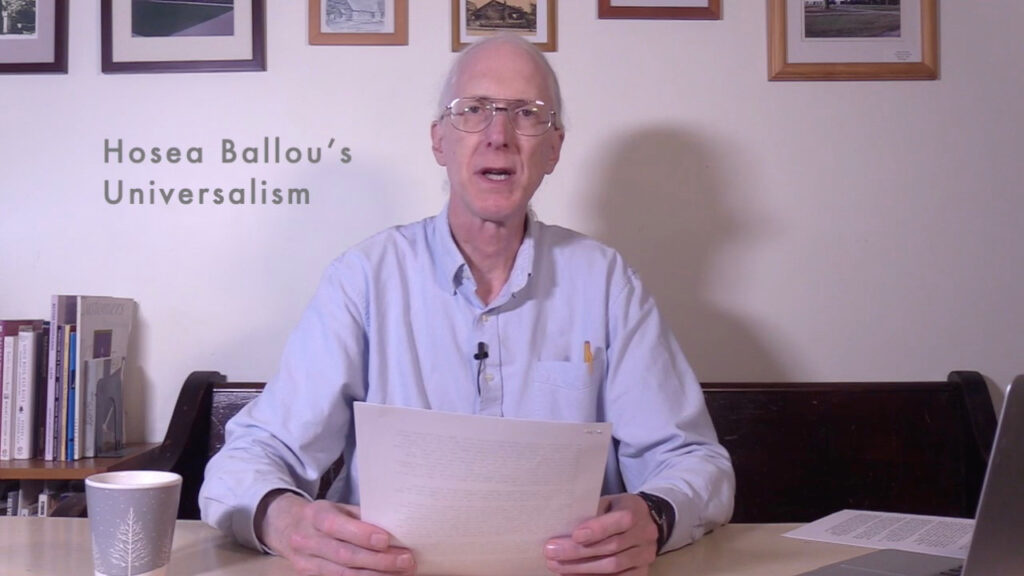For an adult religious education class on Unitarian Universalist theologies, I recorded four short videos. I’ll get to the videos in a moment, but first, a word about online teaching….
Like so many educators, I’ve been trying to figure out how to adjust to our new reality of distance teaching. We feminists have criticized patriarchal pedagogy as disembodied; patriarchal education keeps everything in the head, ignoring the reality of the body. But how do you do embodied teaching when all you see are a bunch of tiny images of people’s heads on your computer screen? A great many pedagogical tools in my feminist-educator toolkit are useless in online learning.
I was talking over this problem with someone I have a great deal of respect for, a feminist who has been doing online teaching for a decade now — she moved to online learning because her subject area is quite specialized, with the result that her students are spread out over the entire North American continent. She said what has worked best for her is to record short videos, of under ten minutes, with lectures outlining a topic area; after showing one of the videos, she moderates an open discussion of the topic.
I’ve been teaching a biweekly adult religious education class — with mixed success — and I decided to try this approach for last night’s class. I was scheduled to teach an hour-long class on Unitarian Universalist (UU) theologies. I focused on four UU theologies, as exemplified by five different persons, prepared four short talks, and recorded four short videos. The class went reasonably well, from my point of view. While the videos were playing, I was able to monitor the chat in the videoconference call, and I could look at the video feeds (of those who left their video on) to monitor facial reactions. The videos were followed by a lively discussion — though with 21 log-ins, it was less than spontaneous, since everyone had to stay muted except for me and one person making a point or asking a question.
Making the video lectures took more time than I would have liked. Yet by recording these short lectures in advance, I could trim out all the times I coughed (with all the smoke in California, I’ve been coughing a lot), and if I stumbled verbally, I could trim or re-record the part where I stumbled. I could also clean up the sound while editing the video, and control the lighting and composition of the visuals.
Another benefit to pre-recording the lectures: I can post them online, where they’re accessible to people who were unable to attend (e.g., due to child care responsibilities). And I can re-use the videos to teach the same class in a year or so, because the discussion that followed the lectures will always be different; plus, with several short videos, I can record new videos on the same topic.
My final conclusion: Although this method of teaching is nowhere near as good as in-person teaching, it was still the best approach I’ve yet tried for online teaching.
In a subsequent post, I’ll include a link to one of the videos, followed by the text of the lecture.

